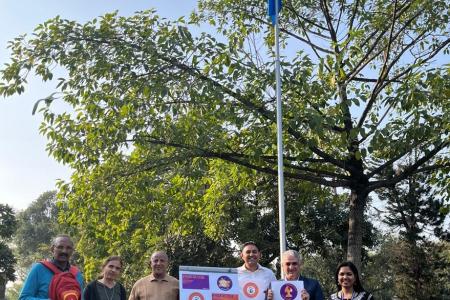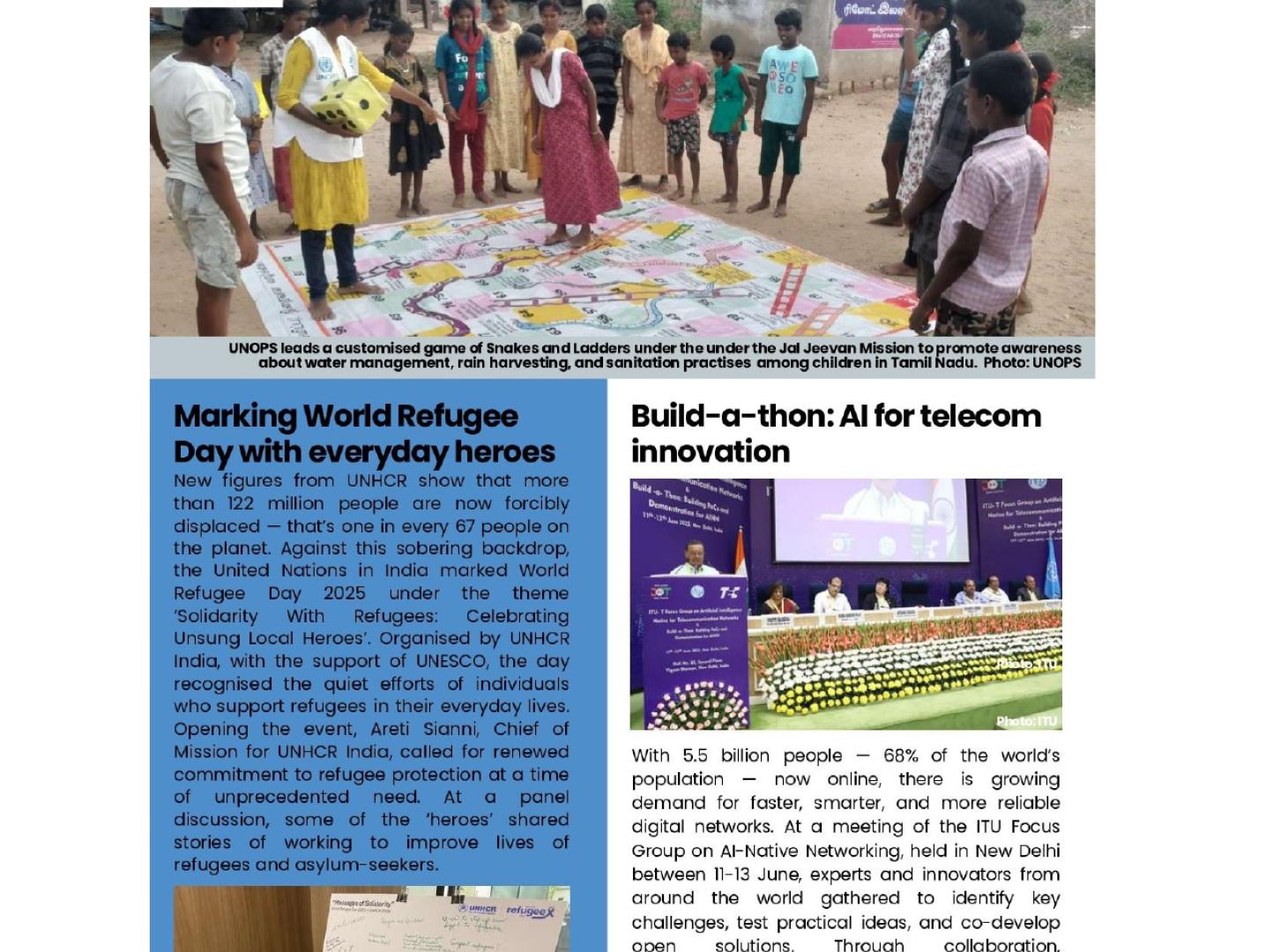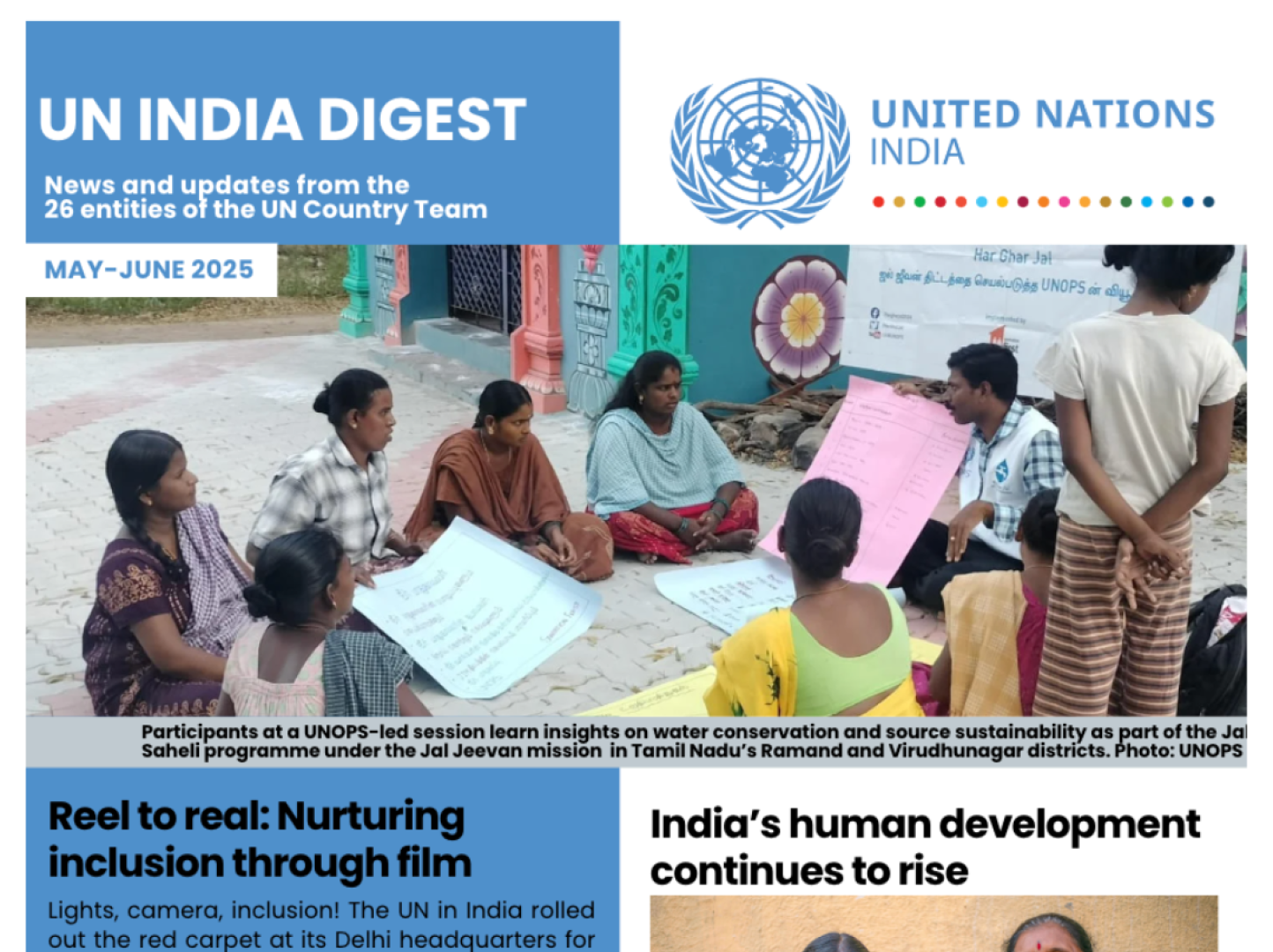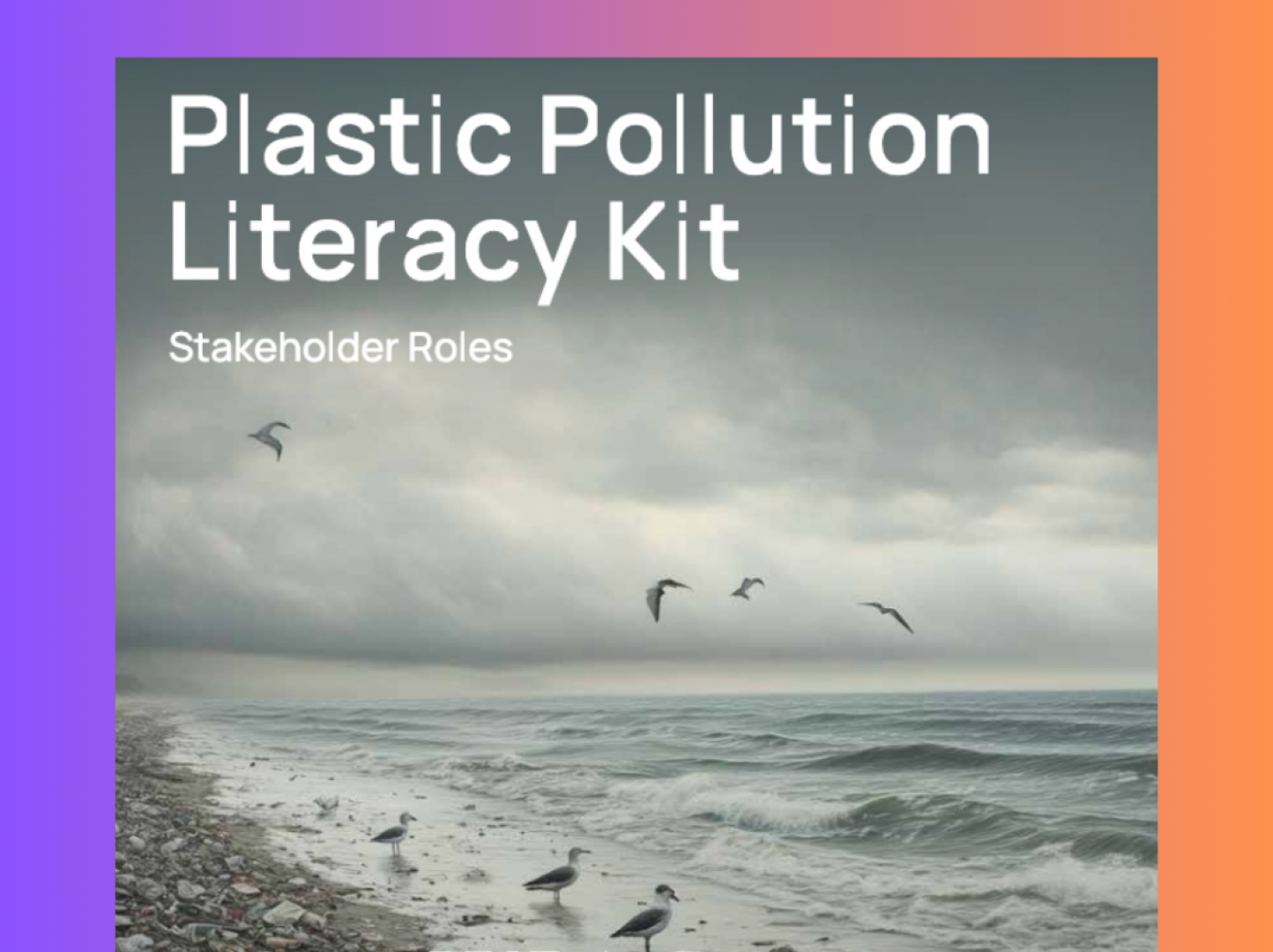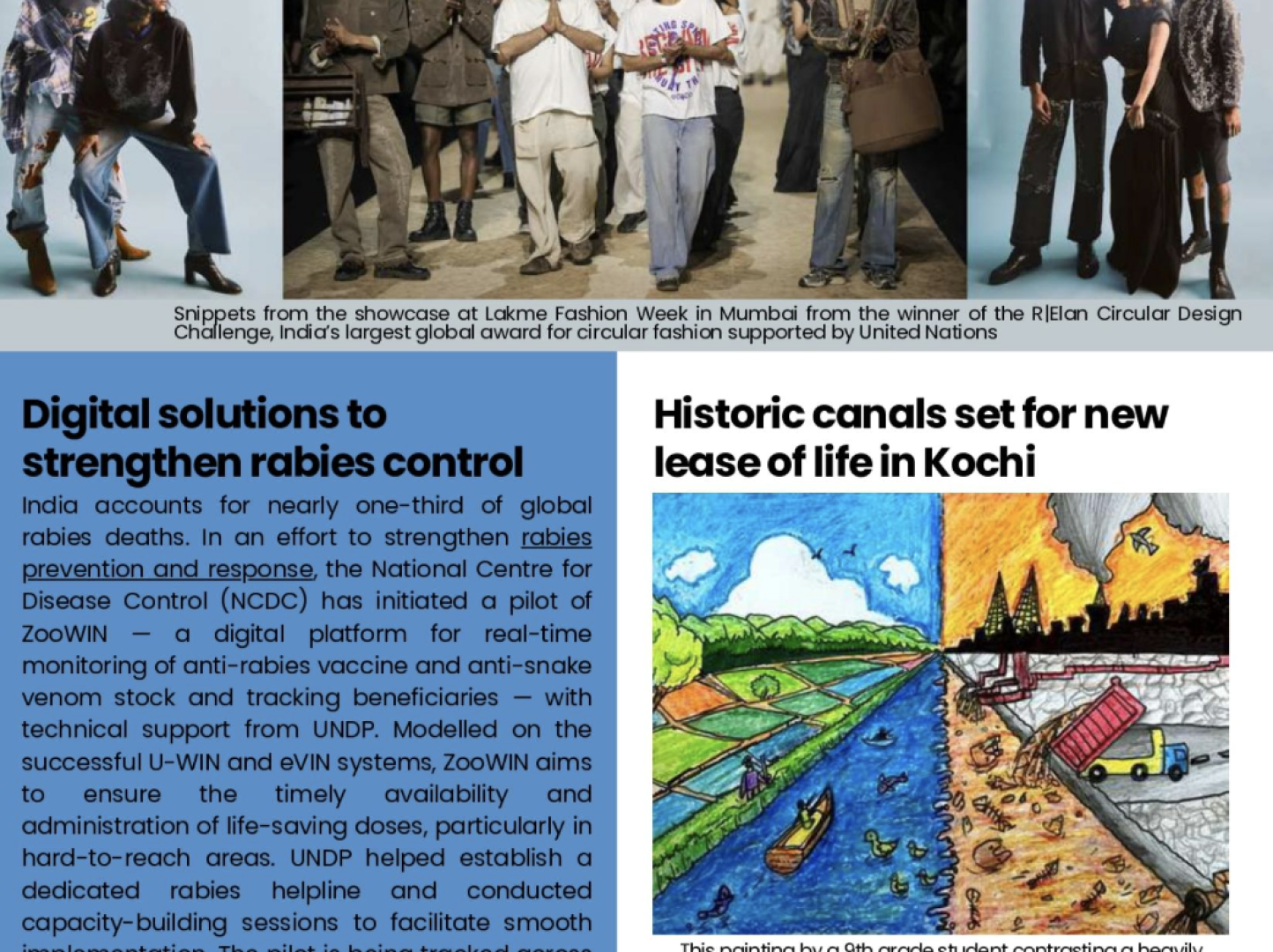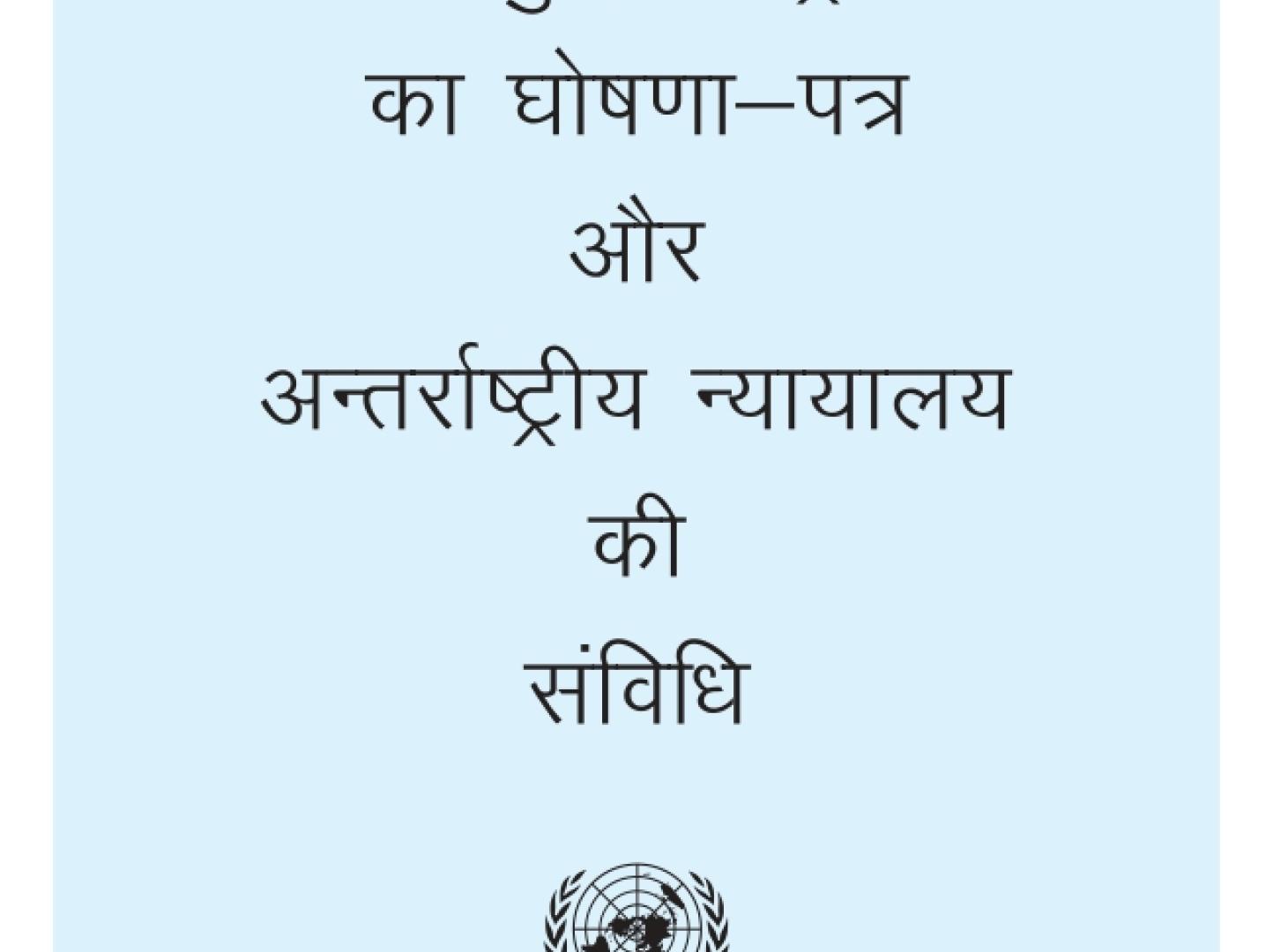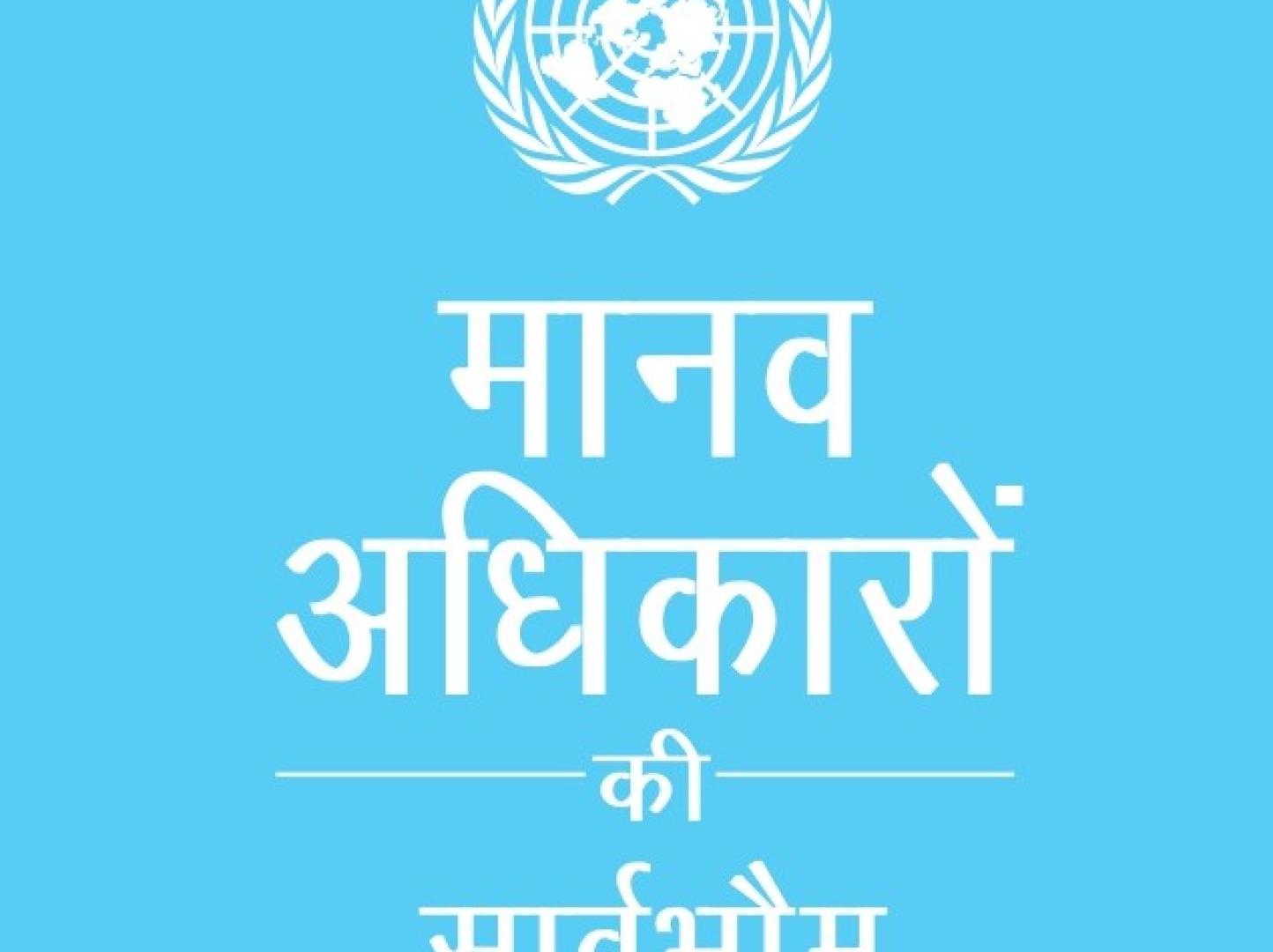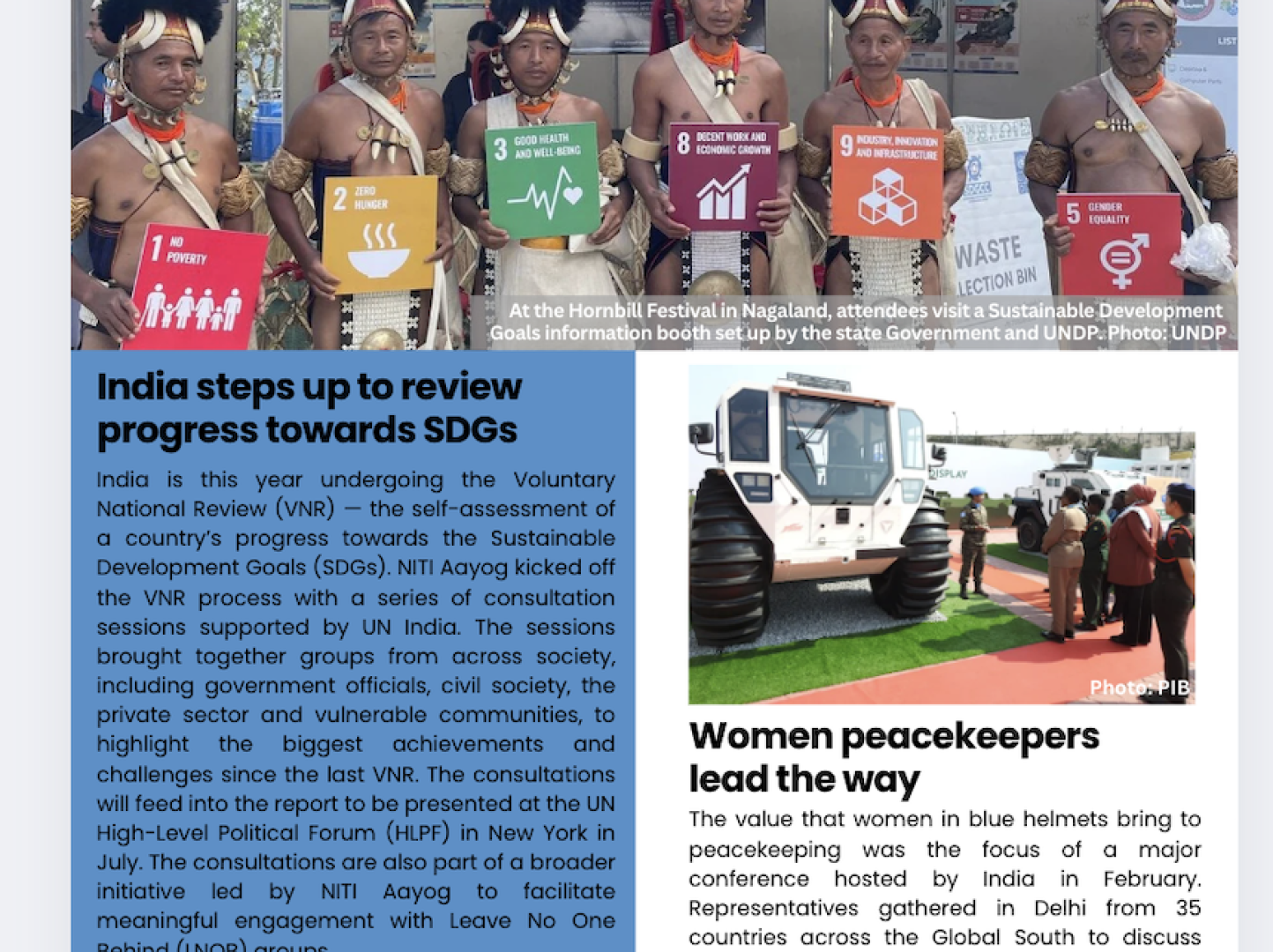Latest
The Sustainable Development Goals in India
India is critical in determining the success of the SDGs, globally. At the UN Sustainable Development Summit in 2015, Prime Minister Narendra Modi noted, “Sustainable development of one-sixth of humanity will be of great consequence to the world and our beautiful planet. It will be a world of fewer challenges and greater hope; and, more confident of its success”. NITI Aayog, the Government of India’s premier think tank, has been entrusted with the task of coordinating the SDGs, mapping schemes related to the SDGs and their targets, and identifying lead and supporting ministries for each target. In addition, the Ministry of Statistics and Programme Implementation (MoSPI) has been leading discussions for developing national indicators for the SDGs. State governments are key to India’s progress on the SDGs as they are best placed to ‘put people first’ and to ensuring that ‘no one is left behind’. The UN Country Team in India supports NITI Aayog, Union ministries and state governments in their efforts to address the interconnectedness of the goals, to ensure that no one is left behind and to advocate for adequate financing to achieve the SDGs.
Story
08 December 2025
SDG Word Search
The 2030 Agenda for Sustainable Development, adopted by all United Nations Member States in 2015, provides a shared blueprint for peace and prosperity for people and the planet, now and into the future. At its heart are the 17 Sustainable Development Goals (SDGs), which are an urgent call for action by all countries - developed and developing - in a global partnership. They recognize that ending poverty and other deprivations must go hand-in-hand with strategies that improve health and education, reduce inequality, and spur economic growth – all while tackling climate change and working to preserve our oceans and forests.
How many words related to the 17 SDG goals did you find in the puzzle above? Answers below: Do you know all 17 SDGs?Goal 1. No poverty: End poverty in all its forms everywhereGoal 2. Zero Hunger: End hunger, achieve food security and improved nutrition and promote sustainable agricultureGoal 3. Good health and well-being: Ensure healthy lives and promote well-being for all at all agesGoal 4. Quality education: Ensure inclusive and equitable quality education and promote lifelong learning opportunities for allGoal 5. Gender Equality: Achieve gender equality and empower all women and girlsGoal 6. Clean water and sanitation: Ensure availability and sustainable management of water and sanitation for allGoal 7. Affordable and clean energy: Ensure access to affordable, reliable, sustainable and modern energy for allGoal 8. Decent work and economic growth: Promote sustained, inclusive and sustainable economic growth, full and productive employment and decent work for allGoal 9. Industry, innovation and infrastructure: Build resilient infrastructure, promote inclusive and sustainable industrialization and foster innovationGoal 10. Reduced inequalities: Reduce inequality within and among countriesGoal 11. Sustainable cities and communities: Make cities and human settlements inclusive, safe, resilient and sustainableGoal 12. Responsible consumption and production: Ensure sustainable consumption and production patternsGoal 13. Climate action: Take urgent action to combat climate change and its impactsGoal 14. Life Below Water: Conserve and sustainably use the oceans, seas and marine resources for sustainable developmentGoal 15. Life on land: Protect, restore and promote sustainable use of terrestrial ecosystems, sustainably manage forests, combat desertification, and halt and reverse land degradation and halt biodiversity lossGoal 16. Peace, justice and strong institutions: Promote peaceful and inclusive societies for sustainable development, provide access to justice for all and build effective, accountable and inclusive institutions at all levelsGoal 17. Partnerships for the goals: Strengthen the means of implementation and revitalize the Global Partnership for Sustainable DevelopmentSDG Progress Report (2025)Every year, the UN Secretary General presents an annual SDG Progress report, which is developed in cooperation with the UN System, and based on the global indicator framework and data produced by national statistical systems and information collected at the regional level. Check the latest SDG Progress Report (2025) here.
How many words related to the 17 SDG goals did you find in the puzzle above? Answers below: Do you know all 17 SDGs?Goal 1. No poverty: End poverty in all its forms everywhereGoal 2. Zero Hunger: End hunger, achieve food security and improved nutrition and promote sustainable agricultureGoal 3. Good health and well-being: Ensure healthy lives and promote well-being for all at all agesGoal 4. Quality education: Ensure inclusive and equitable quality education and promote lifelong learning opportunities for allGoal 5. Gender Equality: Achieve gender equality and empower all women and girlsGoal 6. Clean water and sanitation: Ensure availability and sustainable management of water and sanitation for allGoal 7. Affordable and clean energy: Ensure access to affordable, reliable, sustainable and modern energy for allGoal 8. Decent work and economic growth: Promote sustained, inclusive and sustainable economic growth, full and productive employment and decent work for allGoal 9. Industry, innovation and infrastructure: Build resilient infrastructure, promote inclusive and sustainable industrialization and foster innovationGoal 10. Reduced inequalities: Reduce inequality within and among countriesGoal 11. Sustainable cities and communities: Make cities and human settlements inclusive, safe, resilient and sustainableGoal 12. Responsible consumption and production: Ensure sustainable consumption and production patternsGoal 13. Climate action: Take urgent action to combat climate change and its impactsGoal 14. Life Below Water: Conserve and sustainably use the oceans, seas and marine resources for sustainable developmentGoal 15. Life on land: Protect, restore and promote sustainable use of terrestrial ecosystems, sustainably manage forests, combat desertification, and halt and reverse land degradation and halt biodiversity lossGoal 16. Peace, justice and strong institutions: Promote peaceful and inclusive societies for sustainable development, provide access to justice for all and build effective, accountable and inclusive institutions at all levelsGoal 17. Partnerships for the goals: Strengthen the means of implementation and revitalize the Global Partnership for Sustainable DevelopmentSDG Progress Report (2025)Every year, the UN Secretary General presents an annual SDG Progress report, which is developed in cooperation with the UN System, and based on the global indicator framework and data produced by national statistical systems and information collected at the regional level. Check the latest SDG Progress Report (2025) here.
1 of 5

Story
16 June 2023
UNSDCF 2023-2027
GoI-UNSDCF 2023-2027 represents the UN development system’s collective offer to the Government of India, in line with the national vision for development, for the achievement of the Sustainable Development Goals, promoting gender equality, youth empowerment and human rights. The United Nations General Assembly Resolution A/RES/72/279 designates the United Nations Sustainable Development Cooperation Framework as the principal planning and implementation instrument for the UN Development System at country level. Programme priorities of the UN entities working at the country are derived from the GoI-UNSDCF.
Read the report here: https://digitallibrary.in.one.un.org/PdfViewer.aspx?FileName=8292_1.pdf&Resourcekey=Mz9rVEcrLsA=
1 of 5

Story
26 November 2025
Digital Abuse in Focus as UN Opens 16 Days of Activism
The United Nations has launched its annual 16 Days of Activism against Gender-Based Violence, placing a growing form of abuse at the centre of global attention. Running from 25 November to 10 December, the campaign links the International Day for the Elimination of Violence against Women with Human Rights Day and highlights the sharp expansion of technology-facilitated violence. UN Women reports an accelerating rise in online harassment, cyberstalking, gendered disinformation, image-based abuse and the use of artificial intelligence to create manipulated sexual content. Research indicates that between 16 and 58 percent of women have experienced some form of digital abuse. An estimated 90 to 95 percent of deepfake videos circulating online are sexualised images of women.To mark the start of the campaign, UN Women and the UN Office on Drugs and Crime released Femicides in 2024, the latest global assessment of killings committed by intimate partners or family members. The findings point to a persistent and deeply entrenched pattern. About 83,000 women and girls were deliberately killed last year. Nearly 60 percent of them, or around 50,000, were murdered by a partner or family member. The agencies note that this level of lethal violence has shown no meaningful decline in recent years.The figures amount to one woman or girl killed by someone in her family almost every ten minutes. By comparison, only about 11 percent of male homicides were carried out by intimate partners or family members.The report also highlights how digital tools have become intertwined with physical violence. Technology has increased the reach of cyberstalking, coercive control and image-based abuse. In several documented cases, it has escalated existing threats and contributed to killings.In a message issued for the International Day, the Secretary-General urged governments to criminalise digital violence and expand support for survivors. He called on technology companies to make platforms safer and more accountable and urged communities to reject online hate, noting that digital spaces must not become yet another arena where women and girls are at risk. This year’s campaign offers a series of public resources, including guidance on online safety and material explaining how artificial intelligence is accelerating technology-facilitated abuse. Over the 16 days, the UN is calling for stronger accountability for perpetrators, higher safety standards across digital platforms and sustained funding for women’s rights groups working to prevent and respond to violence. Additional resources: Campaign pageExplainer “Online safety 101”Explainer “How AI is amplifying digital violence and what to do about it” ***
1 of 5
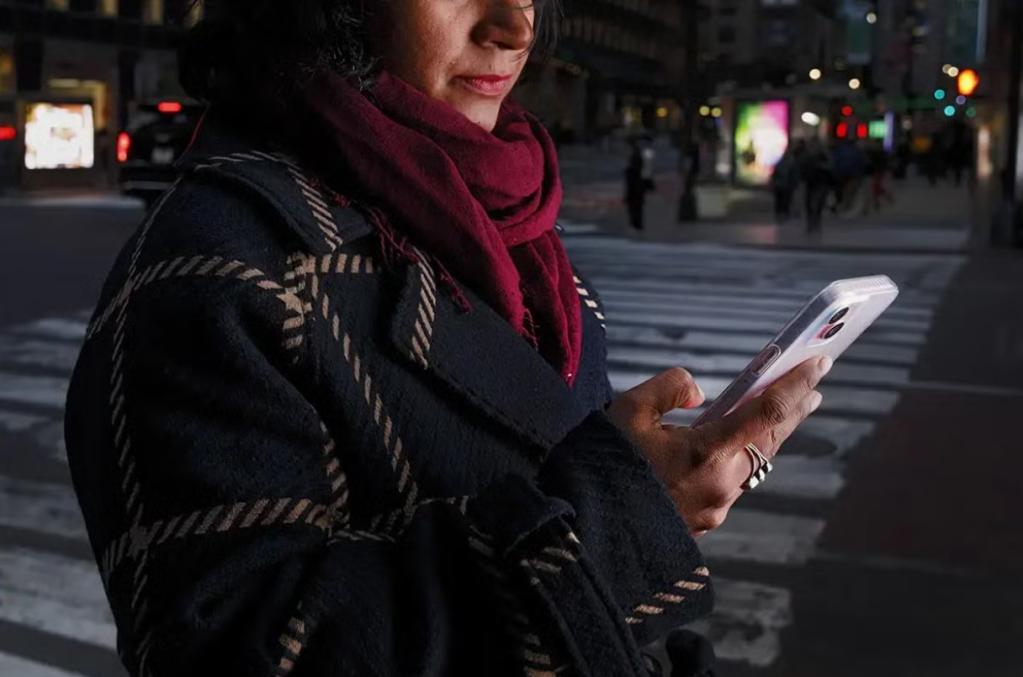
Story
31 October 2025
UNESCO enshrines Lucknow on world’s culinary map
From its famous street foods to its royal kitchen traditions, Lucknow’s cuisine has brought together history, innovation and community spirit for centuries. Now the city has earned a place on the official global culinary map after UNESCO named it a Creative City of Gastronomy. The designation was announced by UNESCO on 31 October, World Cities Day, as part of 58 additions this year to its Creative Cities Network (UCCN). Lucknow becomes the second Indian city to be added to UCCN’s gastronomy category, after Hyderabad was named in 2019. Announcing the designation, UNESCO paid tribute to Lucknow’s historic Awadhi cuisine as well as its flair for culinary creativity. The city is renowned for many distinct dishes, including its succulent kebabs and distinctive take on biryani. With this recognition, Lucknow becomes one of 408 cities across more than 100 countries that have been acknowledged for their contributions to creative industries such as crafts and folk art, design, film, gastronomy, literature, media arts, and music. This year, architecture has been introduced as a new creative field within the network. “Lucknow’s recognition as a UNESCO Creative City of Gastronomy is a testament to its deep-rooted culinary traditions and vibrant food ecosystem. This designation honors the city’s rich cultural legacy while opening new avenues for international collaboration,” said Tim Curtis, Director and Representative, UNESCO Regional Office for South Asia. The UCCN aims to strengthen international cooperation among cities that recognize culture and creativity as drivers of sustainable urban development. Launched in 2004, it supports cities that invest in cultural industries, empower creative professionals, and engage communities to promote inclusion, jobs and economic vitality. ***
1 of 5

Story
24 October 2025
Weaving sustainability into fashion at the Circular Design Challenge
Runway-ready pieces made from chicken feathers, a minimalist wardrobe crafted from banana leather and stainless steel scraps, and a glimpse of an exciting new world of ingenious sustainable couture at the 2025 edition of the Circular Design Challenge. In a fitting finale to the year-long search for the winner of India’s largest award for sustainable fashion, designer Varshne B took home the coveted prize for her collection ‘Symbiosis’, from her eco-conscious label CIRCLE, which includes multifunctional unisex pieces in clean silhouettes woven out of biodegradable plant-based fabrics, including Calotropis fibres, Korai grass, banana leather and repurposed deadstock or leftover fabrics. The runners-up, designers Radhesh Agrahari and Muskan Sainik, were applauded for their unique approach to transform chicken feathers and poultry waste to build outfits made of lightweight, natural fibre with a wool-like texture, and handmade papers for their brand, Golden Feathers.
Six finalists walked the runway at the Lakme Fashion Week in partnership with FDCI in the Indian capital on a crisp October evening, their designs picked out by jury panels of fashion industry leaders and sustainability experts across continents from a pool of more than 160 applicants — the largest cohort yet for the Reliance Industries Limited and the United Nations in India Circular Design Challenge since its inception in 2018. The challenge, which looks to embed sustainability at the heart of fashion, has helped unearth fresh global design talent and innovation by weaving values including responsible production, design-led innovation and closed-loop manufacturing into the fabric of the fashion industry to set up a future-proof fashion ecosystem that is ethical, responsive, and inclusive. “This is the future of fashion where innovation meets creativity and churns out designs with circularity at the core,” United Nations Resident Coordinator in India Shombi Sharp said, as he joined a jury panel including Kimi Dangor, Kulsum Shadab Wahab, Orsola de Castro, Payal Jain and Serge Carreira to shortlist the winners at UN House in New Delhi. The finalists, including British designer and UK shortlist winner Maximilian Raynor, EU winner and founder of Italian brand Cavia Martina Boero, Jesica Pullo's Argentine-Italian fashion brand BIOTICO, and Indian label Farak from designer Rishabh Kumar, also had the opportunity to showcase their designs before Government of India Ministry of Textiles Additional Secretary Rohit Kansal during the final jury meeting, held days before the finale.
The designers were celebrated for their efforts to exemplify the United Nations ethos of 'Leave No One Behind' that is central to the idea of sustainability. Jesica Pullo’s Biotico, from Buenos Aires, for example, is co-created with persons with disabilities through skill building craft, while Rishab Kumar’s Farak, from Jaipur in India, works alongside traditional artisans to revive a centuries-old art of printing using wooden blocks. Chennai-based designer Varshne B, who works with artists who weave traditional korai grass mats in in Tamil Nadu, sources banana leather from Jinali Mody, who was recently awarded the UNEP Young Champion of the Earth 2025 for her material-science startup that turns banana crop waste into a plant-based leather alternative.
The two finalists were awarded seed funding and a mentorship, with the winning label CIRCLE earning a runway showcase for the winning collection at the Lakmē Fashion Week x FDCI in March 2026.
Six finalists walked the runway at the Lakme Fashion Week in partnership with FDCI in the Indian capital on a crisp October evening, their designs picked out by jury panels of fashion industry leaders and sustainability experts across continents from a pool of more than 160 applicants — the largest cohort yet for the Reliance Industries Limited and the United Nations in India Circular Design Challenge since its inception in 2018. The challenge, which looks to embed sustainability at the heart of fashion, has helped unearth fresh global design talent and innovation by weaving values including responsible production, design-led innovation and closed-loop manufacturing into the fabric of the fashion industry to set up a future-proof fashion ecosystem that is ethical, responsive, and inclusive. “This is the future of fashion where innovation meets creativity and churns out designs with circularity at the core,” United Nations Resident Coordinator in India Shombi Sharp said, as he joined a jury panel including Kimi Dangor, Kulsum Shadab Wahab, Orsola de Castro, Payal Jain and Serge Carreira to shortlist the winners at UN House in New Delhi. The finalists, including British designer and UK shortlist winner Maximilian Raynor, EU winner and founder of Italian brand Cavia Martina Boero, Jesica Pullo's Argentine-Italian fashion brand BIOTICO, and Indian label Farak from designer Rishabh Kumar, also had the opportunity to showcase their designs before Government of India Ministry of Textiles Additional Secretary Rohit Kansal during the final jury meeting, held days before the finale.
The designers were celebrated for their efforts to exemplify the United Nations ethos of 'Leave No One Behind' that is central to the idea of sustainability. Jesica Pullo’s Biotico, from Buenos Aires, for example, is co-created with persons with disabilities through skill building craft, while Rishab Kumar’s Farak, from Jaipur in India, works alongside traditional artisans to revive a centuries-old art of printing using wooden blocks. Chennai-based designer Varshne B, who works with artists who weave traditional korai grass mats in in Tamil Nadu, sources banana leather from Jinali Mody, who was recently awarded the UNEP Young Champion of the Earth 2025 for her material-science startup that turns banana crop waste into a plant-based leather alternative.
The two finalists were awarded seed funding and a mentorship, with the winning label CIRCLE earning a runway showcase for the winning collection at the Lakmē Fashion Week x FDCI in March 2026.
1 of 5

Story
11 December 2025
Indian official among UNEP’s 2025 Champions of the Earth
UNEP has announced the 2025 Champions of the Earth, naming five leaders whose work ranges from climate justice and sustainable cooling to forest protection and methane mitigation. Among the awardees is Supriya Sahu of India, recognised for her role in strengthening heat adaptation and ecosystem restoration in Tamil Nadu. Tamil Nadu has emerged as one of the most active Indian states on climate resilience, particularly in regions where high temperatures place everyday life under strain. As Additional Chief Secretary for Environment, Climate Change and Forest, Sahu has guided a portfolio that links cooling, urban planning and ecological recovery in order to protect families most affected by rising heat. One of her initiative is the Cool Roof Project, now introduced in 200 public "green schools." By using reflective white roofs, shading and natural ventilation, the initiative lowers indoor temperatures by five to eight degrees. This gives children safer learning conditions through the hottest months. The same approach is now being extended to social housing developments, offering meaningful relief to households without access to air conditioning and reducing future energy use for those who may install cooling devices later. Her wider programme of nature based solutions has also reshaped how the state prepares for climate impacts. Under her leadership, Tamil Nadu has planted more than 100 million trees, created 65 new reserve forests, doubled its mangrove cover and expanded its wetlands from one site to twenty. These measures restore natural buffers, improve water security and support biodiversity in fast growing districts. A dedicated conservation fund now anchors long term protection for endangered species in the state. Sahu is one of five laureates in the 2025 Champions of the Earth awards. This year’s cohort includes Pacific Islands Students Fighting Climate Change, a youth led NGO that secured a landmark opinion from the International Court of Justice on states’ climate obligations, Mariam Issoufou, an architect advancing climate resilient design in the Sahel, Imazon, a Brazilian research institute using science and AI based monitoring to curb deforestation, and Manfredi Caltagirone, honoured posthumously for his leadership on global methane transparency. The award, now in its twentieth year, is the highest environmental honour of the United Nations.For more information click here***
1 of 5

Story
10 December 2025
Deepavali gets UNESCO Intangible Cultural Heritage tag
Deepavali, the festival of lights, joins the likes of Yoga, Durga Puja, Kumbh Mela, and Vedic chanting to become the 16th element from India to be inscribed on the UNESCO's Representative List of the Intangible Cultural Heritage of Humanity.India’s most widely celebrated Hindu festival represents a time of renewal and community, with the diverse festivities enriching creative expression and fostering solidarity besides serving as a boost to the local economy and traditional livelihoods.The Gifaataa festival of Ethiopia, the Tangali saree weaving art from Bangladesh, Georgian wheat culture, and the family tradition circus in Chile were also inscribed on the list, picked from a pool of 67 nominations examined by the committee at the session.The announcement was made at the 20th session of the Intergovernmental Committee for the Safeguarding of the Intangible Cultural Heritage in New Delhi, the first to be hosted in India and chaired by Ambassador & PR of India to UNESCO Vishal V. Sharma.The diversity of cultural practices is a shared asset, UNESCO Director-General Khaled El-Enany said at the opening ceremony, adding: “Intangible heritage lives within people, is transmitted across generations, and empowers communities to safeguard the roots of our shared humanity".Click here to explore the full Representative List of the Intangible Cultural Heritage of Humanity.
1 of 5

Story
10 December 2025
India marks Human Rights Day
With messages focussing on the importance of equal dignity and fair treatment for all, India and the United Nations marked Human Rights Day on 10 December 2025. At a conference in New Delhi, President Droupadi Murmu noted India’s role in shaping the global human rights framework and said that safeguarding the rights of every citizen remains essential to the country’s progress. Organised by the National Human Rights Commission, the event highlighted the importance of responsive governance and dependable public services in supporting people’s dignity and wellbeing. Areti Sianni, the United Nations Resident Coordinator ad interim, also addressed the gathering and delivered the Human Rights Day message of the UN Secretary General, António Guterres. The statement recalled the origins of the Universal Declaration of Human Rights, noted the pressures on civic space worldwide, and urged stronger support for institutions that protect people at risk. It also outlined the UN’s work with governments and civil society in areas including food and shelter, education, elections, mine action, environmental protection, women’s empowerment and peacebuilding. A day earlier, UNIC New Delhi held a Human Rights Day screening of the Peruvian film Runa Simi at Instituto Cervantes, with support from the Embassy of Peru. The film tells the story of an indigenous Peruvian man who works with his son as they try to dub The Lion King into Quechua and shows how language shapes identity within their community. In her remarks, the Resident Coordinator ad interim, Areti Sianni, said “The film shows how language can shelter memory, how identity can drift away when words are pushed aside, and how a community can thrive when its voice rises.” Human Rights Day is observed by the international community every year on 10 December. It commemorates the day in 1948 the United Nations General Assembly adopted the Universal Declaration of Human Rights. ***
1 of 5
Story
08 December 2025
UN Voices: How Culture Matters Most in Reducing Gender-Based Violence
Every year, the 16 Days of Activism Against Gender-Based Violence campaign brings an international spotlight onto issues that, for many women in India, are simply part of lived reality. As a security professional working in India, I am constantly reminded that gender-based violence in India cannot be separated from the cultural and social norms that silently shape women’s lives here. This sentiment is reinforced during my field assessments, training sessions with women professionals, or while examining patterns of crime and civil unrest.India’s diversity is often celebrated, but within its multitude of traditions lies a deeply rooted system of expectations that continues to influence how women navigate their environments. Long before a woman encounters a security threat on the street or in a workplace, she has already learned a set of unwritten rules passed down through generations. It could be as innocuous as ‘don’t draw attention to yourself’, ‘don’t say no too firmly,’ ‘don’t challenge authority’, ‘don’t stay out late’, and ‘do not do anything that will embarrass the family.’ These then are not merely cultural habits, but they become internalized survival strategies. And these strategies directly intersect with the work we do in the security sector.In many security awareness training sessions I have conducted, especially those focused on women, I have observed how deeply ingrained societal expectations can limit practical safety actions. Women often sense discomfort or risk early -- yet navigating how to respond is shaped by differential power dynamics as men frequently occupy positions of authority at work, at home, and in public spaces, which can make speaking up or taking action feel daunting. While some women do act assertively, others hesitate, not because they lack awareness, but because the fear of social judgement or reprisal is real. In a conservative society, even reasonable steps to protect oneself may be scrutinized, dismissed, or labelled as overreacting, creating a constant tension between instinct and societal constraints.This dynamic plays out in data as well. When compiling incident records from conflict-affected districts, border areas, or metropolitan zones, the gap between reported and experienced harassment becomes glaringly obvious. Women often disclose, in private conversations during training sessions, that they navigate threats daily on public transport, in office corridors, during work travel but choose not to report them. Many women pause not because they doubt their instincts, but because they live with the subtle pressures and power imbalances that make every reaction feel like it must be justified twice over. This silence distorts the picture we rely on as security professionals. Risk assessments become incomplete not because the threats are absent, but because the women facing those threats have been taught that silence is safer than escalation.The rise of technology has only complicated this landscape. Online harassment, financial manipulation, impersonation and blackmail have surged, but digital safety awareness has not kept pace. Again, cultural hesitation plays a role. Many women, and especially young girls, endure online abuse quietly until the situation becomes an emergency. Families often treat digital harassment as trivial or ‘not real enough’ to be taken seriously. For women who already shoulder the burden of respectability, even reporting a cyber threat feels like exposing themselves to scrutiny.Even within organizations like the UN, where gender considerations are strongly embedded in security policies, there remains a gap between what is written and what women can realistically do in conservative social settings. Our plans may clearly advise unnecessary night movement for women, outline safe-travel protocols, and emphasize reporting mechanisms but these measures still assume that women are able to act on them freely. In India’s traditional cultural framework, mobility, communication, and even routine safety decisions are often negotiated within unequal power structures at home or in the community. A plan may be gender-responsive on paper, yet it can falter when a woman hesitates to report a concern, cannot leave home without permission, or faces backlash for prioritizing her own safety. These nuances are rarely captured in formal documents, but they determine whether a security protocol succeeds in practice.What becomes clear over the years is that gender-based violence in India is not only an issue of crime, it is a product of upbringing, societal expectations, and deeply internalized boundaries. Cultural sensitivity is crucial, but it cannot become an excuse to avoid challenging harmful norms. Change requires engagement not just with individual women but with communities, institutions, and families. It requires conversations about autonomy, about the right to occupy public spaces without fear, and about the legitimacy of women’s instincts and experiences.The 16 Days of Activism campaign is ultimately a reminder that safety is not merely about preventing violence, it is about enabling freedom. For women in India, true security will come when they are not only protected from external threats but also liberated from internalized caution imposed by tradition. It will come when organizations design their security strategies with an understanding of how social dynamics shape behavior. And it will come when women have both the tools and the cultural permission to act in their own defence.As a security professional, my work has shown me that policies, data, and training modules matter, but cultural change matters more. Women do not need to be taught fear; society has done that for them. What they need is the space, confidence, and support to trust their instincts and assert their safety without apology. Until that shift becomes visible, gender-based violence in India will remain not just a security issue, but a reflection of the silent, powerful norms that continue to shape our society.
Deepanjali Bakshi
National Security Officer, United Nations Department of Safety and Security New Delhi
Deepanjali Bakshi
National Security Officer, United Nations Department of Safety and Security New Delhi
1 of 5
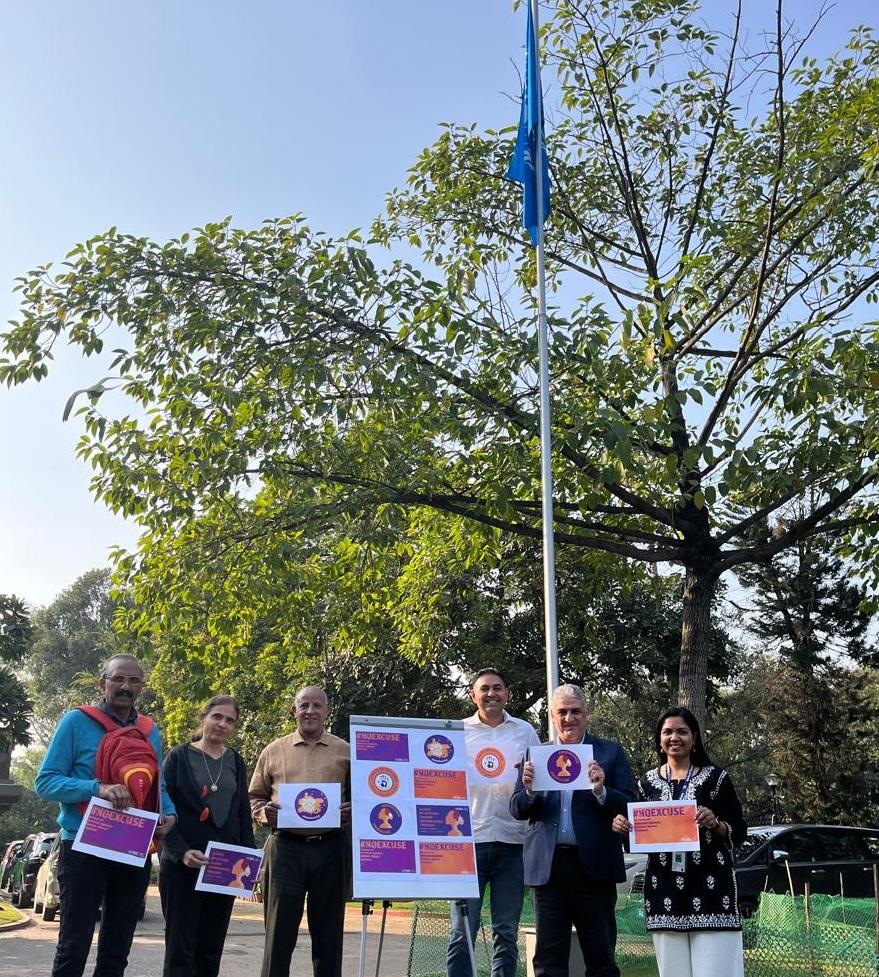
Story
28 November 2025
India’s winter air turns toxic: UNEP warns crisis is ‘nearing disaster levels’
A pale, opaque haze has once again settled over north India. For millions in Delhi and nearby regions, winter has become a season of masks, burning throats, stinging eyes, and a growing fear that even breathing may be harming their health.“This is no longer just an environmental issue. We are breathing ourselves to death,” says Dr. Balakrishna Pisupati, Head of the United Nations Environment Programme (UNEP) in India. “An Air Quality Index (AQI) of 400 or 500 is 35 times higher than international safe limits. That is air in the severe category — dangerous for everyone.”Across India’s northern plains, these numbers have become unsettlingly familiar. But the science behind the haze tells a deeper story.The winter trapEvery November, as temperatures drop and winds still, the atmosphere transforms. Cold air becomes dense and heavy, refusing to rise. Pollutants — dust, smoke, industrial emissions, vehicle exhaust — get trapped close to the ground like a blanket pulled tight over the city.“In summer, rising warm air carries pollutants upward. But in winter, the air is dense and barely moves,” explains Dr. Pisupati. “Delhi often sees wind speeds of just 3 or 4 kilometres an hour. That means whatever enters the air stays there.”Delhi’s geography amplifies this trap. Surrounded partially by the Himalayas, the region around the capital forms a shallow bowl. The pollutants have nowhere to go.This meteorological cocktail has turned the winter months into a predictable health emergency.Many sources, not one villainMuch of the public conversation narrows the crisis to a single cause: crop-residue burning in neighbouring states. But UNEP’s assessment paints a broader, more complex picture.“There is no single culprit,” says Dr. Pisupati. “Construction dust, brick kilns, industries, vehicular emissions, diesel exhaust, crop burning — each of these contributes. What changes in winter is that the dispersion mechanism collapses. Everything accumulates.”Different pollutants overlap, interact, and settle in the lungs of people living across Delhi National Capital Region (NCR) and beyond. The result is an annual spike in asthma, bronchitis, cardiovascular strain and respiratory infections.A long road aheadIndia has taken notable steps. The Commission for Air Quality Management (CAQM) — a statutory authority — oversees coordination across states. The National Clean Air Programme (NCAP) seeks to reduce particulate pollution. Investments in monitoring networks, forecasting tools, and emergency action plans have increased.But Dr. Pisupati cautions that even the strongest policies falter without broad cooperation. “You cannot solve this in two months. Air pollution must be managed all year round, and by all stakeholders — governments, industries, households, commuters, resident welfare groups, and enforcement agencies. Behavioural change is essential.”Compliance remains uneven. So does public participation.“We need people to reduce burning, follow advisories, rethink vehicle use, manage waste better, and take responsibility at the community level,” he says. “Without that, even the best policies will fall short.”Where is India headed? Towards stabilisation or deeper crisis?The UNEP assessment is blunt.“Air pollution in India is close to becoming a disaster,” says Dr. Pisupati. “Its effects are not limited to a season. Pollutants that enter the body now stay much longer.”The solution, he argues, rests on three pillars:1. Policy coherence across ministriesYou cannot subsidise polluting activities in one sector while trying to reduce emissions in another.2. Cross-state cooperationAir does not recognise borders. Regional coordination is essential.3. A multistakeholder, people-centred modelIndustries, micro-enterprises, civil society, youth, media, academia, and health professionals must work together.UNEP has launched an Air Quality Action Forum, a platform where large and small industries, community groups, experts, media, and young people collaborate on solutions — from technology upgrades to clean operations to behaviour change.Climate, development, and behaviourIndia’s climate transition is accelerating. The country is among the largest adopters of renewable energy, surpassing some of its own 2030 goals ahead of schedule. Yet, air pollution persists.“Policies and investments can take us far, but without behavioural change, we will not succeed,” Dr. Pisupati stresses. “Environment is unique — everyone is impacted by it, and everyone contributes to its problems.”UNEP and India’s Ministry of Environment are now designing a national-level behaviour change programme aimed at reducing individual environmental footprints.
1 of 5

Press Release
02 December 2025
Secretary-General appoints Stefan Priesner of Austria as the United Nations Resident Coordinator in India
He brings extensive experience in international development and management, including providing policy advice to governments and overseeing the formulation and delivery of complex, multi-disciplinary development programmes. At the United Nations, he most recently served as the Resident Coordinator in Iran (2021-2025), following his assignment as the Resident Coordinator for Malaysia, Brunei Darussalam, and Singapore (2017-2021). He was also the Resident Coordinator and UNDP Resident Representative in Uzbekistan (2013-2017). Earlier in his career, he held senior roles at UNDP, including Country Director in Bangladesh (2008-2012), Deputy Resident Representative in Bosnia and Herzegovina (2004-2008), Deputy Chief of the Sub-regional Resource Facility for South and West Asia in Nepal (2001-2004). Mr. Priesner started his United Nations career in 1997 with UNDP in Bhutan.Prior to joining the United Nations, Mr. Priesner worked in the private sector.He holds a master’s degree in international relations from Johns Hopkins University in the United States and a master’s degree in law from the University of Vienna in Austria.He is married and has two children.
1 of 5
Press Release
24 November 2025
International Day for the Abolition of Slavery
Slavery is a horror from the history books – and a relentless contemporary crisis.On the International Day for the Abolition of Slavery, we remember past victims, especially the more than 15 million men, women and children across Africa who were seized, shackled and sold into bondage an ocean away – or perished en route.We recall the painful scars their enslavement left on our societies, including structural inequalities and systemic injustices that have persisted for generations.We rally to protect the estimated 50 million people now trapped in contemporary forms of slavery around the world, many of them women and children.And we reiterate our appeal to prevent human rights violations like forced labour and forced marriage from claiming more victims.Contemporary forms of slavery are perpetuated by crime rings that prey on people struggling to cope with extreme poverty, discrimination or environmental degradation – and by traffickers who exploit people fleeing armed conflict or migrating in search of safety and opportunity. It robs people of their rights, and their humanity.Governments, businesses, civil society and trade unions must unite to end this crisis once and for all. And they must provide remedy and redress, with real access to justice, fair compensation, rehabilitation, restitution, and guarantees that victims and their families will not suffer again.2026 marks the 100th anniversary of the Slavery Convention, when the international community made a bold commitment to end slavery in all its forms. We must act with the same resolve to eradicate contemporary forms of slavery. A world built on freedom, dignity and justice for all is not only possible – it is our shared responsibility.[END]
1 of 5
Press Release
23 November 2025
Secretary-General: COP30 is over, but our responsibility is not
I thank President Lula da Silva, COP 30 President Andre do Largo and his team, the Government of Brazil, the people of Belém, and the UNFCCC Secretariat for their hospitality and tireless efforts to make this COP possible.At the gateway of the Amazon, Parties have reached an agreement.This shows that multilateralism is alive, and that nations can still come together to confront the defining challenges no country can solve alone.COP30 has delivered progress – including a call to triple adaptation finance by 2035 as a first step towards closing the adaptation gap;A Just Transition Mechanism to support countries in protecting workers and communities as they shift to clean energy;A new dialogue aimed at enhancing international cooperation on trade;The recognition that we are now heading for a temporary overshoot above 1.5 degrees Celsius;The launch of a Global Implementation Accelerator to close the ambition and implementation gaps and accelerate the delivery of Nationally Determined Contributions;And a recognition to take forward the outcomes of the UAE Consensus, which includes a just, orderly, and equitable transition away from fossil fuels.But COPs are consensus-based – and in a period of geopolitical divides, consensus is ever harder to reach.I cannot pretend that COP30 has delivered everything that is needed.The gap between where we are and what science demands remains dangerously wide.I understand many may feel dissapointed – especially young people, Indigenous Peoples and those living through climate chaos.The reality of overshoot is a stark warning: we are approaching dangerous and irreversible tipping points.Staying below 1.5 degrees by the end of the century must remain in humanity’s red line.That requires deep, rapid emission cuts – with clear and credible plans to transition away from fossil fuels and towards clean energy.It requires climate justice and a massive surge in adaptation and resilience – so communities on the frontlines can survive and recover from the climate disasters to come.And it requires far more climate finance for developing countries to reduce emissions, protect their people, and address loss and damage.COP30 is over, but our work is not.I will continue pushing for higher ambition and greater solidarity.To all those who marched, negotiated, advised, reported and mobilised: do not give up.History is on your side – and so is the United Nations.[END]
1 of 5
Press Release
22 November 2025
UN Secretary-General's Press Conference at G20 Summit
Secretary-General: I thank President Ramaphosa and the people of South Africa for their warm welcome, and for hosting the G20 Summit. My message to G20 leaders over the next two days is simple. Now is the time for leadership and vision. We are living through tumultuous times. Conflicts, climate chaos, economic uncertainty, mounting debt, inequality and a collapse in global aid are inflicting massive suffering around the world. And rising military spending is drawing resources away from development. As the world’s largest economies, the G20 can hold enormous influence to ease suffering, ensure that economic growth is widely shared, and set our world on a better, more peaceful course for the future.The theme of this year’s meeting – “Solidarity, Equality and Sustainability” – points the way. Over the next two days, I will call on G20 members to use their leverage to lead the action we need. First – we need economic action. Developing countries – in particular in Africa – are suffering from a perfect storm of shrinking fiscal space, crushing debt burdens, and a global financial architecture that is failing to support – or even represent – them adequately. Africa has been a double victim of colonialism. First through centuries of exploitation and plunder. And then again when international institutions were created – when most African countries were still under colonial rule, and their voices were absent from the table. Today, Africa remains woefully under-represented across global institutions. This must change. The Pact for the Future, adopted by Member States last year, called for a reform of global financial institutions. Many decisions are disproportionately in the hands of some of the members of G20 across the governance bodies of these institutions. Africa must have a fair seat in every forum where decisions are made – from the boards of international financial institutions to permanent seats in the United Nations Security Council, and to other global bodies. The G20 can help repair this historic injustice and drive reforms that give developing countries – and Africa in particular – a real voice in shaping global policies, and make global economic governance more inclusive, representative, equitable and effective in the years ahead. I will also urge G20 members to live up to the commitments made in June in the Financing for Development Conference in Sevilla to unlock more finance for developing countries. To triple the lending power of multilateral development banks. To increase their role in leveraging more private finance. To ease debt burdens with new instruments to reduce borrowing costs and risks, and speed-up support for countries facing debt distress, drawing on recommendations from my debt expert group.To help developing countries strengthen their capacity to mobilize domestic resources. And to build trade bridges, not trade barriers. Too many developing countries – especially in Africa – find themselves at the bottom of value chains, or locked out of trade opportunities. G20 members can lead the way by dismantling trade barriers and ensuring trade-free access to their markets for the poorest countries. Meanwhile, inequality has become a cancer in our societies, concentrating power and eroding trust in democracy. I commend the G20 Presidency for commissioning a bold report on global inequality. Second – we need climate action. The ongoing COP30 meeting demonstrates how much work needs to be done. Countries have failed to keep temperatures to the 1.5 degree temperature rise limit. Science tells us that a temporary overshoot above this limit is now inevitable. We must make this overshoot as small, short and safe as possible.Avoiding more climate chaos means bridging the adaptation gap – urgently. That requires a massive scale up of financing. Developed countries must keep their promises: By doubling adaptation finance to at least $40 billion this year – and giving confidence that meaningfully increased affordable and accessible adaptation finance will be scaled up beyond 2025.By mobilizing the $300 billion per year promised to developing countries by 2035. By delivering on the Baku to Belem plan mobilizing all relevant partners for achieve $1.3 trillion annually to be achieved in climate finance and in the same timeframe for developing countries.Simultaneously, it is time to capitalize the Loss and Damage Fund – including exploring possibilities of innovative finance. We also need to supercharge the just transition to renewable energy. Last year, 90 per cent of new power capacity came from renewables. Global investment in clean energy reached $2 trillion – $800 billion more than fossil fuels. But only a negligeable proportion went to Africa. Africa should be at the heart of this clean energy revolution.The continent holds immense solar and wind potential – but lacks the investments needed to harness them. A just energy transition must also mean to entirely electrifying Africa – powering homes, schools, clinics and industries, and creating decent jobs for its young people. No one should be left in the dark by the clean energy age – least of all a continent that has contributed the least to the climate crisis. The economics are on our side. But political will needs to catch up. Fossil fuels still receive vast subsidies. Corporations are pocketing record profits from climate devastation. And lobbyists continue to greenwash the truth, while developing countries are locked out of a greener future. Ensuring that all countries can make this shift means aligning national policies and budgets with a just energy transition. It means providing resources and technology to help developing countries invest in grids, storage and efficiency. It means supporting workers and affected communities to make the transition, through training, protection and new opportunities. And it means unlocking finance at scale for developing countries by cutting the cost of capital and crowding in private investment. I will discuss these issues in detail with G20 leaders tomorrow. Finally – we need action for peace. I will call on G20 members to use their influence and voices to end the conflicts that are causing so much death, destruction and destabilization around the world. We need peace in Sudan: Through ending the carnage and an immediate cessation of hostilities. Through the safe, unimpeded and rapid delivery of humanitarian aid to civilians in need in the whole Sudan. By ending the flow of weapons and fighters into Sudan by external parties. And by both the Sudanese Armed Forces and the Rapid Support Forces coming to the negotiating table. We need peace in the Democratic Republic of the Congo – through a lasting solution that respects the country’s sovereignty and territorial integrity, while addressing the root causes of the instability and violence.We need security and peace in the Sahel. Armed groups and terrorist networks continue to exploit fragile governance and intercommunal tensions, fueling cycles of violence that have displaced millions and destabilized entire communities. The alarming developments in Mali are making a dramatic situation even worse, presenting new risks to the wider region and the entire continent. Addressing this dire security situation means taking action to urgently restore trust and strengthen cooperation between countries across the region. It’s time for the countries of the region to stand together and deliver the stability, hope and peace that people across the Sahel need and deserve. We need a just, sustainable and comprehensive peace in Ukraine – in accordance with the UN Charter, international law and resolutions of the General Assembly. We need peace in Gaza: By upholding the ceasefire, ending its continued violations, and fully implementing the commitments of the peace agreement. By establishing a credible political path towards ending the occupation. And by realizing the right to self-determination of the Palestinian people, leading to a two-state solution that enables Israelis and Palestinians to live in peace and security, anchored in international law.And everywhere – from Haiti to Yemen to Myanmar and beyond – we must choose peace anchored in international law. Ladies and gentlemen of the media, I look forward to a productive Summit, and I thank the government and people of South Africa for their warm welcome. Thank you. QUESTION AND ANSWERSQuestion: Mr. Secretary-General. Thank you so much and welcome to Johannesburg. My name is John Besche reporting for the Financial Mail here in South Africa. My question is as the G20 convenes this weekend; there's uncertainty about whether commitments regarding sustainable Finance Debt Reform and Climate Adaptation will tangibly benefit ordinary people once the spotlight move on from South Africa? From your advantage point, what specific mechanisms exist or are needed to ensure that the G20 yields meaningful improvements in the lives ordinary South Africans? Secretary-General: I first of all pay tribute to leadership of President Cyril Ramaphosa. I think he has put on the table all the issues that matter in relation to the needs, the financial and economic needs, of the developing countries in general and African countries in particular. But the G20 is an informal gathering that decides by consensus and obviously, one of the reasons why I'm talking to you today, is to put pressure on the G20 to do exactly the kind of reforms that are necessary for the perspectives of development and the implementation of the Sustainable Development Goals in the African continent to become a reality. The system as it works today is unfair and ineffective. I've been saying time and time again that the present international financial architecture was designed by a group of developed countries and essentially adapted to the needs of their economies. It's time to have a real global international financial system, which main preoccupation should be [to] address the challenges that developing countries face. Will the G20 be able to move in that direction? We will see. But I think that South Africa has done it's part putting those things clearly on the table. Question from AFP: You mentioned or talked about a sustainable and comprehensive peace plan in Ukraine. I just wanted to know what’s your overall assessment of the 28 [point] peace plan that has been brokered by the US. Do we have some of the issues that are promising in that peace plan? And do you have some that you think still need more discussion? Secretary-General: First of all, we don't know what the peace plan is. I just read on the papers that Russia has not yet received any peace plan, so we are talking about something that is in the press that was never present formally by the United States or by any other entity. For us as UN, the criteria of any peace plan are always based in the values of the Charter and in international law. And so obviously for us, a peace solution for Ukraine that is in line with these principles would also abide by the resolutions of the General Assembly that have clearly indicated that the territory integrity of Ukraine - and in general, around the world, the territorial integrity of states - must be respected. I just said the same about the Democratic Republic of Congo. Question: Olga Bataman, RT. And I would like to follow up on what you just mentioned. Thank you so much for highlighting that so many countries of Africa and of the global South are severely under-represented in key UN structures. So, first, is your organization going to address this issue soon or in the long run? And for example, just recently, Nigeria protested that there was a UN event arranged by the United States where Nigeria was discussed but Nigerian delegation was not even invited, and Nicki Minaj was speaking at that event. So how can it happen that issues concerning individual states can be discussed at UN forums or events without their participation? Thank you so much for your time. Secretary-General: Well, there might have been that event; it’s the first time that I have heard about it. We have a very important summit in Nigeria on counterterrorism, so it's not our intention at all to make Nigeria not present in all our discussions. And for us, I believe if you look at what is today, the senior management of the UN, you will see that the senior management is quite balanced globally. And at the same time, if you look at the programmes of action of most of the UN entities, they are essentially focused on the interest of developing countries.But there is one problem that I cannot solve, because when people look at the UN, many people do not see the humanitarian work that we do, sometimes in extremely difficult circumstances. Four hundred of our staff were killed in Gaza. People do not see our effort in pushing for the reform of the international financial architecture. People do not see our efforts in pushing for climate action and climate justice or our efforts in relation to gender equality. People see the Security Council. That's what appears in the headlines, and obviously the Security Council is something created long ago and represents a world that no longer exists. There are no permanent representatives from Africa or from Latin America and there are three European government permanent representatives - the UK, France, and Russia. People might argue, but Russia is essentially a European country. It has also an Asian part, but its centre is in Europe. I mean, this is totally at odds with the reality of today's world. And so, one thing I can guarantee is that in the action of the Secretariat of the UN, we will be doing everything to correct inequalities and injustices and to guarantee effective representation to developing countries, but we have not the power to reform the Security Council or to reform the IMF or the World Bank. All this depends on the will of Member States, and usually those that have power are quite reluctant in accepting a re-distribution of that power. Question from New Central Television in Nigeria: My question is simple - how do you think the world leaders who are gathered here this weekend, how do you think they should address the issue of debt relief for developing countries, especially in Africa? Because that's one of the big issues that African countries are facing today. Secretary-General: We have created the experts’ group on debt relief. They presented their recommendations. I just mentioned it in my intervention. I know that President Ramaphosa also has created a group on debt relief. And the chair of that group, Trevor Manuel, was also a member of our group, and what is interesting is that the conclusions in that group are very similar. It is clear that we have, first of all, to look into countries in distress and have an effective dept relief for those countries. And on the other hand, we must act in different ways through the markets dealing with credit rating agencies and taking initiatives in this regard, and through the intervention of the multilateral development banks. We need to reduce the cost of capital, and we need to make sure that there is equity in the criteria when countries borrow. There are European countries with a debt that is much higher than the debt of many African countries, but they still get access to the markets with very low interest rates. And there are African countries that have solid finance and good development perspectives that still only have access to credit at very high rates. So, we need to organize things in order to create the conditions and there are ways to do it through guarantees, through the involvement of multilateral development banks with private finance being those that accept the first risk. There's a number of concrete measures that can be made in order to reduce the cost of capital, which would allow for lower indebtedness of countries. And at the same time, as I said, the mechanism that was put in place for debt relief has been acting too slow and it needs a very meaningful reform for countries that indeed need a reduction of their debt to have a relatively rapid mechanism to be able to achieve that result. Question: My first question is about Climate issue. So, do you think that COP30 in Belém was a success or a failure without some G20 members? The last question is can you address the process issue to G20 leaders in relation to the Democratic Republic of Congo, knowing clearly that the humanitarian situation is getting worse? Thank you. Secretary-General: It is very clear that everywhere in the world, because temperatures are rising and they will rise above 1.5 [degrees] at least for some periods - so-called overshooting is inevitable, that adaptation became a major priority and one of the things I tried to fight in my presence in the COP was to achieve a guarantee that the adaptation funding will triple until 2030. And so, this is one of the very important things that is being discussed in the COP.But it is also clear that it does not make sense to spend more than more money to correct the impact of disasters and not to do everything possible to avoid the disasters, and to avoid the disasters means a drastic cut in the emissions. And so, with the same insistence in which I asked for tripling the funding for adaptation, I asked for a clear indication of how we are going to move the transition away from fossil fuels into renewables, and at the same time how – taking into account that the national term contributions presented by states still leads to 2.3 to 2.5 degrees limit - how can we intensify our efforts to have a much more drastic reduction of emissions in the next few years.Now, the COP is confronted with these things and there is obviously contradictory interest in the COP as there are in the G20. The Brazilian Presidency has been conducting it's very effectively as the South African Presidency has been conducting the G20 work very effectively, I hope that in both cases they will be able to obtain meaningful results.On the DRC, the question is simple. We must have peace in the DRC. So, there are negotiations taking place. There was an agreement in Washington, and there was an agreement, a partial agreement, in Doha. But the fact is that people go on fighting.So, I think our priority is [to] see a stop to fighting to have a complete ceasefire and simultaneously to make progress in the negotiations of Washington and Doha to have a political solution that allows, as I mentioned in my intervention, for the territory integrity the DRC to be respected but at the same time to address some of the root causes of conflict that exist. And obviously, it is important to say [that] one of the best ways to avoid conflict is through development.[END]
1 of 5
Press Release
21 November 2025
UN Secretary-General's Press Conference at COP30
Secretary-General: I want to express my deep gratitude and appreciation to President Lula for his remarkable leadership – and to the Brazilian Presidency that is sparing no effort to steward the COP to a success. Over the past days, I have met with world leaders, ministers, negotiators, Indigenous Peoples, civil society, and young people from every region.One thing is clear: We are down to the wire, and the world is watching Belém. Communities on the frontlines are watching too – counting flooded homes, failed harvests, lost livelihoods… And asking: how much more must we suffer? They have heard enough excuses. They demand results. After decades of denial and delay by many, science tells us that a temporary overshoot above 1.5 degrees – starting at the latest in the early 2030s – has become inevitable. We know what that means: More heat and hunger;More disasters and displacement; And a higher risk of crossing climate tipping points – unleashing irreversible damage, including here in the Amazon. But we can still bend temperatures back below 1.5 degrees before the end of this century: If we act now to make this overshoot as small, short, and safe as possible. That mission begins here, in Belém. I strongly appeal to all delegations to show willingness and flexibility to deliver results that protect people and keep 1.5 degrees alive; A fair outcome – concrete on funding adaptation, credible on emission cuts, bankable on finance. That demands compromise and common ground. It demands courage. No delegation will leave Belém with everything it wants… But every delegation has a duty to reach a balanced deal. First, on protecting people. For millions, adaptation is not an abstract goal. It is the difference between rebuilding and being swept away; Between replanting and starving; Between staying on ancestral land or losing it forever. Adaptation needs are skyrocketing – and the overshoot will push them even higher. Yet developed countries’ commitment to double adaptation finance this year is slipping away. Tripling adaptation finance by 2030 is essential. The Loss and Damage Fund – open for business but still largely empty – must be capitalized and easier to access. I urge all funders – bilateral partners, climate funds, and multilateral development banks – to step up and prevent further tragedies. It is about survival. It is about justice. And for Indigenous Peoples, it is also about protecting cultures and homelands that sustain our planet’s vital ecosystems. Second, emission cuts. Ten years after the Paris Agreement, we have moved – but nowhere near enough. The UNEP Emissions Gap Report shows that today’s Nationally Determined Contributions – even if fully implemented – would put us on a path well above 2 degrees of global warming. That is a death sentence for many. Those national plans must be a floor, not a ceiling. We must move much faster – with a drastic cut on emissions. The renewables revolution makes it possible. Clean energy has never been cheaper and more abundant; Powering growth; And shielding households and economies from volatile fossil fuel markets. With the right support, it is essential that most countries peak emissions now, slash them in half this decade, hit net-zero by 2050, and go net-negative after.The principle of Common But Differentiated Responsibilities applies. But every country – especially the big emitters – must do more. And the world must begin a just, orderly, and equitable transition away from fossil fuels – as agreed at COP28 in Dubai. It is a climate necessity – and a test of economic stability, energy security, and responsible governance. We must end market distortions that favour fossil fuels. We must address disinformation aimed at derailing the transition. But governments must support workers and communities still relying on coal, oil and gas – with training, protection, and new opportunities. I welcome calls for a just transition mechanism – and the growing coalition asking for clarity on the transition away from fossil fuels. And I urge countries to ensure that the Belém outcome operationalizes a just transition that is aligned with a 1.5-degree world. Moving faster also means investing in infrastructure and meeting new electricity demand with clean power – including the surge driven by Artificial Intelligence.That is why I have been calling for a new Global Coalition on Grids, Storage, and Electrification – so clean energy reaches everyone, everywhere and becomes a default choice. We must also cut methane emissions sharply this decade – using proven, affordable measures. Finally, and extremely important, it is imperative to halt and reversing deforestation by 2030 – so nature remains a shield, not a casualty. Third, on finance. None of this can happen without funding that it is predictable, accessible, and guaranteed.We need a credible path to realizing the Baku Finance Goal: With developed countries leading to mobilize at least 300 billion US dollars by 2035 each year; And a clear route to reaching 1.3 trillion US dollars per year by 2035. Simpler rules must allow vulnerable countries to get support quickly. Thinking beyond the COP, the cost of capital for developing economies must fall drastically – through concessional finance, debt guarantees, and innovative instruments. We know that budgets are limited – but the financial system can unlock and multiply the available resources to achieve a much greater impact. Multilateral Development Banks must play a decisive role. They need to be bigger, better, and bolder – allowing them to massively increase their lending capacity and to leverage private finance at speed and scale. What has been failing is the political will to take the necessary decisions. If international financial architecture cannot meet this moment, reform becomes a necessity, not an option. Before I leave for the G20 meeting in South Africa, Allow me to say a few words directly to ministers and negotiators: Please engage in good faith to reach an ambitious compromise. 1.5 degrees must be your only red line. This is the hour for leadership. Be bold. Follow the science. Put people before profit. And please keep your eyes on the finish line. Thank you. [END]QUESTION AND ANSWERS Question: [Climate Home News] Thank you. Following what you mentioned about finance and adaptation, particularly on this COP30, what would you consider to be a truly ambitious outcome on the topics of public finance and adaptation? Thank you. Secretary-General: I mentioned in my intervention that I consider possible and desirable, to triple adaptation finance until 2030. And I strongly hope that it will be possible to find a compromise in which developed countries accept to engage in this objective, and at the same time, their concerns about mitigation are also met by the COP. Question: [BBC] Hello Secretary-General. Secretary-General, what message you want this Conference to send to Donald Trump? Secretary-General: We are waiting for you. Question: But do you also want to talk about when he will begin to engage in this process? […] I was asking, do you see a possibly of him engaging in this process in a positive way? Secretary-General: Hope is the last thing that dies. Question: [Reuters] Thank you. Is a roadmap to transition away from fossil fuels vital to the outcome of this COP and if that is not delivered as a deal of all countries here, not just some, sign up to, would you say that COP30 has failed? Secretary-General: I think this is not the moment to talk about the possible failure of the COP. It is the moment to guarantee that failure doesn’t occur. And so, I am perfectly convinced that a compromise is possible, that take into account, as I mentioned, the legitime concerns of adaptation and the legitimate concerns of mitigation, which of course, includes the necessity of taking into account the question of fossil fuels as it was done in the Dubai’s Summit, COP. Question: [AFP], a significant number of countries, including large emitors, have not publish their NDCs yet, their climate plans, what is your message to them? Secretary-General: Well, my message is that it is absolutely essential to have NDCs as quick as possible, but more than that, as looking into today’s NDC’s, they are far from being aligned in general, not everyone, but in general, far from being aligned with 1.5 degrees goal. We need to consider them as a floor, not a ceiling and we need to make an effort in order to guarantee that we have a more drastic cut in emissions in the years to come. Question: [Folha de São Paulo] How do you see the resistance of parties, such as the EU and the UK, who are supporting the roadmap to transition away from fossil fuels but do not want to talk about increasing finance, specially in adaptation. What would be your message to these countries? Secretary-General: I must tell you that I spoke with many of those countries, and they seemed ready to engage with the financing and adaptation, having as a legitimate concern, that it is balanced by progress in the key aspects of mitigation. Thank you very much.
***
***
1 of 5
Latest Resources
1 / 11
1 / 11


